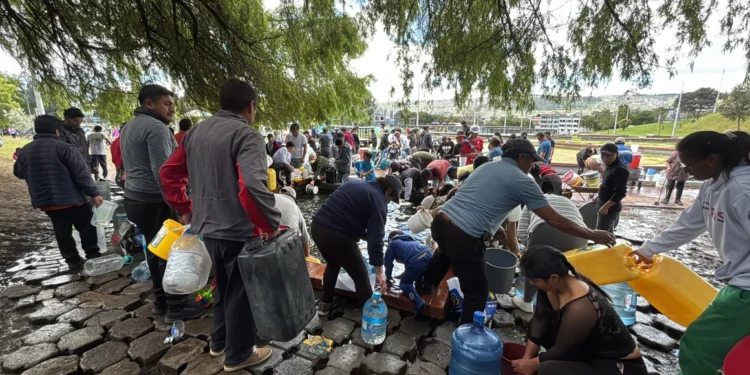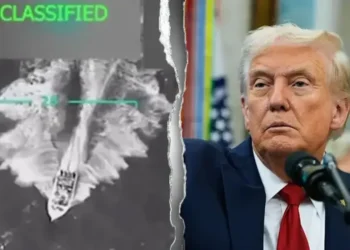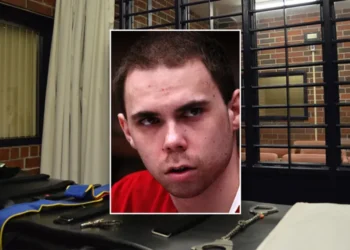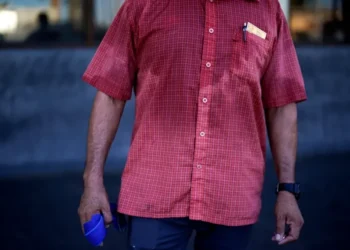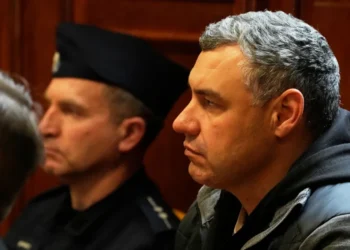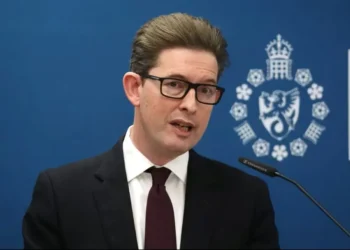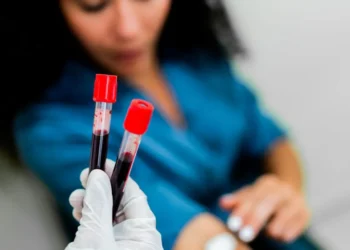Quito Plunged Into Water Crisis After Pipeline Collapse: Thousands Still Without Access
City’s worst shortage in decades strains residents, exposes tensions between local and national governments
Thousands Left Without Water as Emergency Deepens
Ecuador’s capital, Quito, is facing its most severe water crisis in 25 years, leaving around 400,000 residents without reliable access to drinking water. The emergency began after a landslide damaged a key pipeline supplying southern parts of the city, cutting off a vital resource and sending families scrambling to meet their daily needs.
Despite the deployment of over 70 municipal water tankers, demand continues to far outpace supply, triggering long lines, street protests, and increasing desperation among residents—particularly older adults and families with children.
Residents Wait for Hours—Or Go Without
In the Chillogallo neighborhood and surrounding communities, people have resorted to lining up with buckets, bottles, and washbasins, hoping to receive water from passing tankers. But the trucks are often delayed or miss neighborhoods entirely.
“We’ve been here since morning, and still no one has come,” said Inés Castro, 74, who waited alone in the heat. “I live by myself. If I get any water, I’ll need help just to carry it home.”
Others expressed similar frustration. “We’re cold, hungry, and tired,” said retired resident Erselinda Guilca. “At this point, I’d rather lose electricity than water. You can’t live without it.”
Unsafe Alternatives Raise Health Concerns
In southern neighborhoods like Nueva Aurora, some residents have turned to unfiltered springs in public parks—gathering non-potable water for washing and sanitation. Many walk or bike long distances, while others pay for makeshift carts or use garbage bags to carry water home.
“I know it’s not safe to drink, but we need it for the toilet or cleaning,” one man told local reporters.
The government has now installed a portable water treatment plant in the area to help reduce health risks as the crisis drags on.
Soaring Costs Add to the Strain
For many low-income families, transporting water has become an unexpected financial burden. Some report paying up to $5 per trip just to bring containers home from water distribution sites.
“I have to go seven or eight times a day,” said María Tipán, who’s caring for her grandchildren. “Water is becoming so expensive, and we’re still expected to pay our regular water bill.”
Emergency Response Met With Political Infighting
While Mayor Pabel Muñoz has pledged to restore full water service by Sunday, coordination between Quito’s city government and Ecuador’s national authorities has been uneven at best.
The municipality reports that 77% of debris from the landslide has been cleared, with over 500 workers mobilized daily to repair infrastructure. Additional tankers have been dispatched from neighboring regions, and three mobile purification units are being set up by the Ecuadorian Red Cross and the National Emergency Operations Committee (COE).
But the response has exposed sharp divisions. Energy Minister and COE President Inés Manzano accused the municipality of failing to submit a crisis plan or maintain transparent communication. In response, Mayor Muñoz criticized the national government for excluding local officials from key coordination meetings.
“Why haven’t they engaged with the municipality? Why no presence at the Unified Command Post?” Muñoz asked during a press briefing.
President Noboa Silent as Pressure Mounts
President Daniel Noboa has yet to publicly address the water crisis. His administration has recently faced criticism over a perceived lack of attention to social issues, with labor unions and civil groups staging protests.
Noboa, who was reelected earlier this year, has made national security and gang crackdowns central to his platform. But the water crisis in Quito threatens to draw greater scrutiny to his domestic priorities—and the government’s ability to handle critical infrastructure failures.
What Comes Next
As the emergency stretches into its second week, residents across Quito are demanding faster relief and greater accountability. The pipeline repairs continue, but public frustration is growing—particularly among those who still wait each day for a truck that may never arrive.
Officials say they’re working to prevent long-term health and sanitation issues, but unless coordination between national and municipal authorities improves, the crisis may deepen before it’s resolved.
Source: CNN – Ecuador’s capital rocked by water shortage crisis upending daily life

